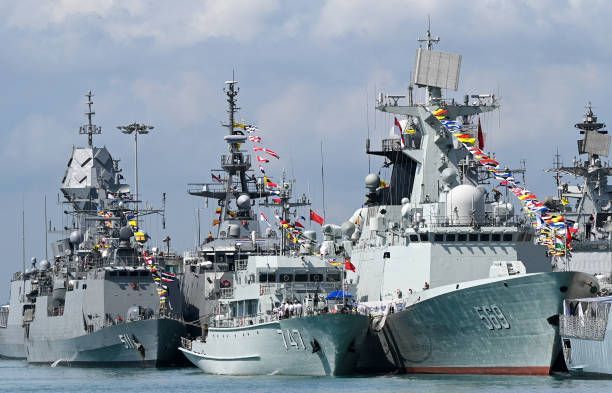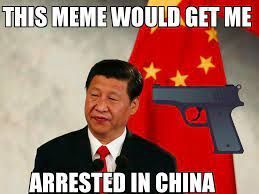The Myth of a Global Chinese Threat
Why China Is a Regional Power—Not a Global Military Superpower

1. No Global Command and Control Infrastructure
The ability to project power across the globe requires more than advanced weaponry—it requires an intricate network of command and control systems that can coordinate land, sea, air, and space assets in real time across multiple theaters. The United States has developed this capacity through decades of military investment and global engagement. It operates regional combatant commands (e.g., CENTCOM, INDOPACOM, AFRICOM), which allow for near-instantaneous coordination and response to global events. These systems are supported by redundant communication satellites, experienced joint staffs, and a culture of interagency cooperation.
China, by contrast, lacks this integrated architecture. The PLA only recently began reforming its command structure to foster joint operations, and even those efforts are in their infancy. There is no indication that China has developed the institutional culture, doctrine, or experience to run complex, global campaigns. Most of its command capacity is still centered within the Chinese mainland and focused on short-term, regional operations.
2. No Proven Logistical Reach
One of the most underappreciated elements of global power projection is logistics. The U.S. military has mastered this art with fleets of aerial refueling tankers, sealift ships, forward-deployed bases, and global supply chains. The U.S. can mobilize and sustain combat operations thousands of miles from home for months or years—something no other nation can match.
China’s logistical network, by comparison, is rudimentary. Its aerial refueling capability is limited, restricting the range of its fighter jets and bombers. The PLA Navy has few replenishment ships, and it cannot maintain a carrier strike group at sea for extended periods without returning to port. Its single overseas base in Djibouti offers minimal strategic flexibility, especially compared to the dozens of U.S. bases across the Pacific, Indian Ocean, and Europe. Without robust resupply and refueling infrastructure, China’s power projection is inherently limited in duration, scope, and geography.
3. Lack of Combat Experience
Warfare is unpredictable. Combat experience teaches military leaders how to adapt, improvise, and command under pressure. The U.S. military has spent the past several decades in continuous combat—from the Gulf War to Iraq, Afghanistan, and various special operations worldwide. American generals and admirals are combat-tested leaders with firsthand knowledge of joint warfare, coalition operations, and asymmetric threats.
China, on the other hand, has not fought a major war in over 40 years. The 1979 border conflict with Vietnam was short, costly, and largely seen as a failure. The PLA’s current leadership has no real combat experience, which raises questions about how they would perform in a high-stakes, dynamic conflict. Without testing their doctrine under fire, China’s military capabilities remain largely theoretical.
4. Cultural and Political Constraints
The structure of China’s military further limits its effectiveness. Unlike Western militaries, which prioritize merit-based leadership and strategic autonomy, the PLA is beholden to the Chinese Communist Party. Senior officers are appointed based on loyalty, not competence, and political commissars maintain constant oversight within the ranks.
This results in a command culture that is rigid, top-down, and risk-averse. Innovation is discouraged, junior leaders are not empowered to take initiative, and decisions are often delayed by layers of political scrutiny. In modern warfare, where speed and adaptability are critical, this kind of centralized micromanagement can be a fatal weakness.
5. Limited Resources for Sustained Conflict
At first glance, China’s economy appears formidable. But a closer look reveals deep vulnerabilities that would be exposed in a prolonged conflict. China imports over 70% of its oil, and most of it flows through chokepoints like the Strait of Malacca—easily blockaded in wartime. Its domestic supply chains are heavily dependent on global trade routes, which the U.S. Navy could easily disrupt.
Moreover, China is facing demographic decline, mounting debt, and an aging population. These structural issues strain its economy and reduce its ability to sustain a high-tempo war. By contrast, the U.S. benefits from secure energy resources, a broad alliance network, and resilient economic systems built to support prolonged military efforts. A war of attrition would severely weaken China’s economy and political stability long before it would break U.S. resolve.
6. Regional Ambitions, Not Global Ideology
Much of the fear surrounding China’s rise stems from comparisons to past global threats like Nazi Germany or the Soviet Union. But China’s ambitions are very different. It seeks dominance over its immediate periphery—Taiwan, the South China Sea, the East China Sea—not ideological conquest. Its actions are driven by nationalism, not revolutionary zeal.
China’s “Belt and Road” initiative, often portrayed as global expansionism, is more economic than military. While it aims to increase Chinese influence, it does not involve military occupation or the export of political systems. China wants respect and leverage, not ideological submission. Its foreign policy is transactional and pragmatic, not messianic or expansionist.
Conclusion: A Real Rival, But Not a Global Juggernaut
China is not to be underestimated—but it should also not be misunderstood. It is a growing power with serious capabilities and strategic interests. But it is not equipped—militarily, politically, or economically—to challenge the United States for global dominance. Its strengths are real, but so are its limitations.
The U.S. remains the only country with true global reach, experienced military leadership, and a durable network of allies and infrastructure. Until China builds the institutions, logistics, and trust that underpin global power—not just regional influence—it will remain what it is: a significant, but bounded, power in Asia.
We should approach China with vigilance and realism—not alarmism.
Sources
- U.S. Department of Defense. (2023). Annual Report on Military and Security Developments Involving the People’s Republic of China. https://media.defense.gov
- Erickson, A. S. (2021). Chinese Naval Shipbuilding. Naval Institute Press.
- Scobell, A., et al. (2020). China’s Military Decision-Making in Times of Crisis. RAND Corporation.
- Liff, A. P. (2019). “China and the U.S. Alliance System,” The China Quarterly, 242, 419–445.
- Office of Naval Intelligence. (2020). PLA Navy Identification Guide. U.S. Navy.











